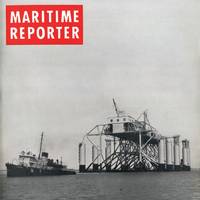Ohio Dredge Fleet Sets Dredging Record
The Ohio Department of Natural Resources (ODNR) recently finished the 2016 dredging season, having removed more than 1 million cubic yards (apprx. 765,000 m3) of dredged material from state park lakes and other state properties. The State’s dredge fleet consists primarily of Ellicott Model 460SL swinging ladder dredges. The 1 million cubic yards of sediment is the most that has ever been removed in the history of the state’s dredging program. ODNR Director, James Zehringer, attributes ODNR’s dredging success to the dedicated staff and the strategic use of available resources, which serves to improve boater access and water quality. “ODNR remains committed to improving access to Ohio’s lakes and understands the vital role healthy waters play in all of Ohio’s communities,” Zehringer said.
The History of Offshore Energy

Offshore exploration is a history of man v. Prospecting for oil is a dynamic art. From a lake in Ohio, to piers off the California coast in the early 1900s, to the salt marshes of Louisiana in the 1930s, to the first “out-of-sight- of-land” tower in 1947 in the Gulf of Mexico, the modern offshore petroleum industry has inched its way over the last roughly 75 years from 100 ft. of water ever farther into the briny deep, where the biggest platform today, Shell’s Perdido spar, sits in 8,000 ft. of water. As a planet, we have two unquenchable thirsts – for water and for oil.
MMS Awards $67M for CIAP Grants in 2009
The Minerals Management Service (MMS) announced that it awarded $67m in grants to Alabama, Alaska, Louisiana, Mississippi and Texas and their political subdivisions in 2009 through the Coastal Impact Assistance Program (CIAP). Created by the Energy Policy Act of 2005, the CIAP provides funding to the six Outer Continental Shelf oil and gas producing states to mitigate the impacts of energy development on marine and coastal areas. MMS awarded funds to the eligible states in 2009 for 86 projects - Alabama, three; Alaska, 14; Louisiana, 29, Mississippi, 20; and Texas, 20. California’s first grant award is expected in the coming weeks. The majority of the projects focus on conservation…







